-
The archaeological record of the Qaraçay River Basin along the northern piedmont of the Lesser Caucasus Antiquity (IF 1.9) Pub Date : 2024-11-11 Andrea Ricci, Stefania Fiori, Muzzafer Huseynov, Bakhtiyar Jalilov, Jutta Kneisel, Hendrik Raese
-
Ethical entanglements: human remains, museums and ethics in a European perspective Antiquity (IF 1.9) Pub Date : 2024-11-08 Liv Nilsson Stutz, Rita Peyroteo Stjerna, Sarah Tarlow
-
Making plundered spaces sacred again: fragmentation, reorganisation and respect in reused Theban tombs Antiquity (IF 1.9) Pub Date : 2024-11-08 Rennan Lemos
-
Lower Paleolithic Stone-Animal ontologies: stone scrapers as mediators between early humans and their preferred prey World Archaeology (IF 1.8) Pub Date : 2024-11-01 Vlad Litov, Ran Barkai
Animal meat, fat, and other animal-derived materials have been essential for human adaptation since the Early Palaeolithic, forming a crucial foundation for many hunter-gatherer societies until rec...
-
Earliest Ancient Maya salt production in southern Belize: excavations at Jay-yi Nah Antiquity (IF 1.9) Pub Date : 2024-11-06 Heather McKillop, E. Cory Sills
-
Seals and signs: tracing the origins of writing in ancient South-west Asia Antiquity (IF 1.9) Pub Date : 2024-11-05 Kathryn Kelley, Mattia Cartolano, Silvia Ferrara
-
Soii Havzak: a new Palaeolithic sequence in Zeravshan Valley, central Tajikistan Antiquity (IF 1.9) Pub Date : 2024-11-04 Yossi Zaidner, Sharof Kurbanov
-
Stone on stone: elite involvement in stoneworking at the ancestral Maya site of El Perú-Waka’ Antiquity (IF 1.9) Pub Date : 2024-11-04 Rachel A. Horowitz, Damien B. Marken, Juan Carlos Meléndez
-
Beyond Urban Hinterlands. Political Ecology, Urban Metabolism and Extended Urbanization in Medieval England Cambridge Archaeological Journal (IF 1.6) Pub Date : 2024-11-04 Ben Jervis
Drawing on insights from contemporary urban theory, this contribution questions where medieval urbanization took place. It is proposed that urbanization is a process which extends beyond towns and cities, which are merely a representation of a more expansive and transformative process. Through discussion of building stone, grain production, salt extraction, woodland management and mineral exploitation
-
The Maya Ajawtaak and Teotihuacan Hegemony c. 150–600 ce Cambridge Archaeological Journal (IF 1.6) Pub Date : 2024-11-04 Trenton D. Barnes
This study considers the role played by Teotihuacan in the emergence of the office of the Classic Maya ajawtaak, or ‘lords’. I argue that the synthesis of this office at the site of Tikal was influenced by the building of Teotihuacan's Pyramid of the Feathered Serpent between about 180 and 230 ce. Prior to and in concert with this building's construction, Teotihuacanos orchestrated the sacrifice of
-
Water Regimes and Infrastructures: A Transhistorical Archaeology of the Desaguadero River, Bolivia Cambridge Archaeological Journal (IF 1.6) Pub Date : 2024-11-04 Scott C. Smith, Maribel Pérez Arias
This article uses tensions over the construction of a flow-regulation infrastructure built to control outflow from Lake Titicaca into the Desaguadero River, on the border between Peru and Bolivia, as a case study to explore the ways that relationships to water emerge and are contested. We argue that a nuanced understanding of tensions arising from this infrastructure requires us to recognize the long-term
-
The origin of the Protogeometric style in northern Greece and its relevance for the absolute chronology of the Early Iron Age Antiquity (IF 1.9) Pub Date : 2024-10-29 Trevor Van Damme, Bartłomiej Lis
-
Experiencing the divine? Museum presentations of religion in Roman Britain Antiquity (IF 1.9) Pub Date : 2024-10-29 Antony Lee
-
Running out of empty space: environmental lidar and the crowded ancient landscape of Campeche, Mexico Antiquity (IF 1.9) Pub Date : 2024-10-29 Luke Auld-Thomas, Marcello A. Canuto, Adriana Velázquez Morlet, Francisco Estrada-Belli, David Chatelain, Diego Matadamas, Michelle Pigott, Juan Carlos Fernández Díaz
-
Cultural evolution as inheritance, not intentions Antiquity (IF 1.9) Pub Date : 2024-10-29 R. Alexander Bentley, Michael J. O'Brien
-
On the poverty of academic imagination: a response to Bentley & O'Brien Antiquity (IF 1.9) Pub Date : 2024-10-29 Tim Ingold
Many years ago, I taught a course at the University of Aberdeen on the ‘4As’ of anthropology, archaeology, art and architecture (Ingold 2013). As we had been discussing flint-knapping, I invited the master-knapper, John Lord, to give a demonstration. We watched in awe as he skilfully detached flakes from a flint nodule of irregular shape to reveal the classical, bifacial form of an Acheulean handaxe
-
The past was diverse and deeply creative: a response to Bentley & O'Brien Antiquity (IF 1.9) Pub Date : 2024-10-29 Catherine J. Frieman
I want to preface this response by noting that, while I think Bentley, O'Brien and I fundamentally differ in how we approach the archaeological record (2024), I am also convinced that the more perspectives on the past we can cultivate, the richer our interpretative garden will be. Moreover, the more narratives of past worlds we develop, the more nuanced and complex our image of the past will become
-
Human intent and cultural lineages: a response to Bentley & O'Brien Antiquity (IF 1.9) Pub Date : 2024-10-29 Anna Marie Prentiss
I thank Bentley and O'Brien (2024) for their cogent review of issues associated with inheritance and intention in cultural evolution. Intent is, of course, present in cultural process and that begs the question as to when and how we concern ourselves with it as a factor in cultural evolution (Rosenberg 2022). Intent underlies our understanding of both micro- and macro-scale processes of cultural evolution
-
On cultural traditions and innovation: finding common ground Antiquity (IF 1.9) Pub Date : 2024-10-29 R. Alexander Bentley, Michael J. O’Brien
We appreciate the respondents’ comments on our debate article ‘Cultural evolution as inheritance, not intentions’ (Bentley & O'Brien 2024). We all agree that traditional cultural practices—such as manufacturing Acheulean handaxes—often take considerable amounts of time to learn; as Gladwell (2008) popularly proposed, it takes 10 000 hours of practice to make an expert. We also appear to agree that
-
Ancient inequality and economic growth Antiquity (IF 1.9) Pub Date : 2024-10-29 Gregory K. Dow
The authors of this book are archaeologists who want to create a field they describe as ‘critical paleoeconomics’. Their quest is promising in several ways. For example, they are not averse to grand narratives and believe modern economic theory can offer insights into various features of ancient economies, including markets, trade, money and debt.
-
Old cities, new pathways: approaches to Roman urbanism in Italy Antiquity (IF 1.9) Pub Date : 2024-10-29 Adeline Hoffelinck
Throughout the twentieth century, considerable research has been dedicated to understanding the rise, development and end of ancient cities. In recent years, there has been a remarkable upsurge of new methodological and theoretical approaches applied in urbanism studies, which enables us to improve, validate or question our knowledge about ancient urban life. The three books reviewed here concern the
-
How Long Does a Memory Last? Bayesian Chronological Modelling and the Temporal Scope of Commemorative Practices at Aeneolithic Monjukli Depe, Turkmenistan Cambridge Archaeological Journal (IF 1.6) Pub Date : 2024-10-29 Ilia Heit
In this paper the history of one house and a human burial in the prehistoric settlement of Monjukli Depe, Turkmenistan, serves as a case study for the use of Bayesian chronological modelling to approach the reach of past memories. The method combines relative and absolute chronological data and aims not only at a more precise and robust chronology of past events, but also allows estimations of duration
-
From History to Cultural Diversity: The Changing Roles of the Maya Script as Archaeological Data Journal of Archaeological Research (IF 4.2) Pub Date : 2024-10-26 Matthew Looper
-
Historical archaeology in the Indian Ocean world Antiquity (IF 1.9) Pub Date : 2024-10-25 Henriette Rødland
This edited volume by Mark Hauser and Julia Jong Haines aims to bring together local narratives within the context of the Indian Ocean in modern times, from c. AD 1500, and establish how these narratives can inform historical archaeology. As the editors highlight in the introductory chapter, historical archaeology has been greatly informed and inspired by the Atlantic world and its colonial histories
-
New research on Neolithic circular enclosures Antiquity (IF 1.9) Pub Date : 2024-10-25 François Bertemes
Today, Neolithic circular enclosures are generally regarded as evidence of the first monumental architecture in Europe. They are undoubtedly a topical subject in Neolithic research and also attract great interest from a broader audience. This has not always been the case. Just over 40 years ago, the few examples known then, mainly from Bavaria and Bohemia, were regarded as exotic and of no particular
-
The Past Is Not What It Used to Be: Contemporary Myths, Cold War Nostalgia and Abandoned Soviet Nuclear Bases Cambridge Archaeological Journal (IF 1.6) Pub Date : 2024-10-25 Grzegorz Kiarszys
This article delves into the contemporary social perception of the three abandoned Soviet Cold War tactical nuclear bases in Poland, focusing on often overlooked phenomena in archaeological studies such as the contemporary myths (folk tales, contemporary legends, modern folklore, etc.) and nostalgia that have emerged around these sites. While contemporary myths and nostalgia are distinct phenomena
-
Deconstructing the ‘Gandhāra still’: a new challenge to the accepted trajectory of early distillation technology Antiquity (IF 1.9) Pub Date : 2024-10-24 Nicholas Groat
-
Assembling ancestors: the manipulation of Neolithic and Gallo-Roman skeletal remains at Pommerœul, Belgium Antiquity (IF 1.9) Pub Date : 2024-10-23 Barbara Veselka, David Reich, Giacomo Capuzzo, Iñigo Olalde, Kimberly Callan, Fatma Zalzala, Eveline Altena, Quentin Goffette, Harald Ringbauer, Henk van der Velde, Caroline Polet, Michel Toussaint, Christophe Snoeck, Laureline Cattelain
-
Projectile points, dangers and Amerindian ontologies at eastern Catamarca (Argentina) during the first millennium CE World Archaeology (IF 1.8) Pub Date : 2024-10-21 Enrique Moreno, Marcos Román Gastaldi, Lucas Ignacio Gheco, Débora Egea, Marcos Quesada
Evaluating the links between South American Amerindian ontologies and the contextual study of knapped lithic technology is the main goal of this paper. To this end, we focus on a study case from ea...
-
Italy's empty hillforts: reassessing urban-centric biases through combined non-invasive prospection methods on a Samnite site (fourth–third centuries BC) Antiquity (IF 1.9) Pub Date : 2024-10-21 Giacomo Fontana, Wieke de Neef
-
The Time of the Stones: A Call for Palimpsest Dissection to Explore Lithic Record Formation Processes Journal of Archaeological Method and Theory (IF 3.2) Pub Date : 2024-10-17 Santiago Sossa-Ríos, Alejandro Mayor, Laura Sánchez-Romero, Carolina Mallol, Manuel Vaquero, Cristo M. Hernández
-
PLOMAT: plotting material flows of ‘commonplace’ Late Bronze Age seals in western Eurasia Antiquity (IF 1.9) Pub Date : 2024-10-16 Christina Tsouparopoulou, Glynnis Maynard, Sergio G. Russo
-
Assessing the quality of citizen science in archaeological remote sensing: results from the Heritage Quest project in the Netherlands Antiquity (IF 1.9) Pub Date : 2024-10-14 Quentin Bourgeois, Eva Kaptijn, Wouter Verschoof-van der Vaart, Karsten Lambers
-
Palmyra: At the Crossroads of the Ancient World Journal of Archaeological Research (IF 4.2) Pub Date : 2024-10-11 Rubina Raja, Eivind Heldaas Seland
-
Deaths at the heart of the state: incarcerating working-class youth at Ferme Neuve of Les Douaires, France World Archaeology (IF 1.8) Pub Date : 2024-10-10 Elias Michaut
In the 19th century, French youth detention was a necropolitical enterprise aimed at controlling precarious social classes. Built in the 1840s in Normandy, Ferme Neuve is a rare example of the firs...
-
Discrimination of Cereal Residue Adsorbed by Pottery Based on Metabolomics Journal of Archaeological Method and Theory (IF 3.2) Pub Date : 2024-10-08 Lei Lu, Rui Wen, Junjun Cui
-
A spectral cavalcade: Early Iron Age horse sacrifice at a royal tomb in southern Siberia Antiquity (IF 1.9) Pub Date : 2024-10-08 Timur Sadykov, Jegor Blochin, William Taylor, Daria Fomicheva, Alexey Kasparov, Sergey Khavrin, Anna Malyutina, Sönke Szidat, Gino Caspari
-
Archaeology and a case of genocide: the ‘indigenous prisons’ of Minas Gerais, Brazil World Archaeology (IF 1.8) Pub Date : 2024-10-08 Pedro Fermín Maguire
A 2021 sentence condemned a retired Major of the Military Police of Minas Gerais on charges of genocide against the Krenak people. Between 1969 and 1979, that state’s Military Police established tw...
-
Towards a political ecology of piracy in the Age of Sail World Archaeology (IF 1.8) Pub Date : 2024-10-07 Shannon Lee Dawdy
Although historians and archaeologists have been quick to point out the political and economic conditions that tend to foment sea piracy, less attention has been given to the ecology of ‘blue crime...
-
Necroviolence in the archaeological evidence. Mass crimes in the Szpęgawski Forest, Poland and the materiality of Aktion 1005 World Archaeology (IF 1.8) Pub Date : 2024-10-03 Dawid Kobiałka
The first few months of Second World War were marked by numerous mass crimes against humanity committed by Third Reich civil servants on citizens of the Second Polish Republic – local intelligentsi...
-
Entanglements, ontologies, and grinding stones at the medieval site of Handoga (Djibouti) World Archaeology (IF 1.8) Pub Date : 2024-09-30 Jorge de Torres Rodríguez, Valeria Franco Salvi
This paper analyses the role and meaning of grinding artefacts in Handoga (Djibouti), a medieval town that flourished between the 13th and 16th centuries in a territory previously occupied by nomad...
-
Microhistories of an invisible punishment. For an archaeology of sexual exploitation in Spain World Archaeology (IF 1.8) Pub Date : 2024-10-04 Xurxo Ayán Vila, Carlos Otero Vilariño
This article collects the preliminary results of the SEXLAVES project focused on the archaeological study of the materialities generated by the sexual exploitation of women in the northwest of Spai...
-
Reconnecting the Forest, Savanna, and Sahel in West Africa: The Sociopolitical Implications of a Long-Networked Past Journal of Archaeological Research (IF 4.2) Pub Date : 2024-09-30 Stephen Dueppen
-
Giving rock art new life: combining past images, identity and contemporary art Antiquity (IF 1.9) Pub Date : 2024-10-01 Andrzej Rozwadowski
-
The archaeology of a Nazi synthetic-fuel plant and its legacy: the Hydrierwerke Pölitz AG Antiquity (IF 1.9) Pub Date : 2024-09-30 Grzegorz Kiarszys, Maksymilian Dzikowski
-
Mass-hunting in South-west Asia at the dawn of sedentism: new evidence from Şanlıurfa, south-east Türkiye Antiquity (IF 1.9) Pub Date : 2024-09-30 Fatma Şahin, Michele Massa
-
Where is everybody? The unburied dead in late Roman and early medieval England Antiquity (IF 1.9) Pub Date : 2024-09-30 Emma Brownlee, Alison Klevnäs
-
American sweet potato and Asia-Pacific crop experimentation during early colonisation of temperate-climate Aotearoa/New Zealand Antiquity (IF 1.9) Pub Date : 2024-09-26 Ian G. Barber, Rebecca Waikuini Benham
-
Embodied Poverty: Bioarchaeology of the Brentwood Poor Farm, Brentwood, New Hampshire (1841–1868) American Antiquity (IF 2.7) Pub Date : 2024-09-24 Alex Garcia-Putnam, Amy R. Michael, Grace Duff, Ashanti Maronie, Samantha M. McCrane, Michaela Morrill
Through a commingled, fragmentary assemblage of skeletal remains (MNI = 9) recovered from a 1999 salvage excavation, this article explores the lives and deaths of individuals interred at the Brentwood Poor Farm, Brentwood, New Hampshire (1841–1868). This work demonstrates that bioarchaeological analyses of smaller samples can provide nuanced accounts of marginalization and institutionalization even
-
Reading Colonial Transitions: Archival Evidence and the Archaeology of Indigenous Action in Nineteenth-Century California American Antiquity (IF 2.7) Pub Date : 2024-09-24 Lee M. Panich, Gustavo Flores, Michael Wilcox, Monica V. Arellano
Archaeologists in North America and elsewhere are increasingly examining long-term Indigenous presence across multiple colonial systems, despite lingering conceptual and methodological challenges. We examine this issue in California, where archaeologists and others have traditionally overlooked Native persistence in the years between the official closing of the region's Franciscan missions in the 1830s
-
Geoglyphs in the Andean Central Coast: combining digital and traditional survey techniques Antiquity (IF 1.9) Pub Date : 2024-09-23 Angel Sanchez-Borjas, Christian Mesia-Montenegro, Joaquin Narvaez-Luna
-
Linear Pottery Culture sites west of the Oder river in the Federal state of Brandenburg, Germany Antiquity (IF 1.9) Pub Date : 2024-09-23 Erwin Cziesla
-
Warriors from the south? Arrowheads from the Tollense Valley and Central Europe Antiquity (IF 1.9) Pub Date : 2024-09-23 Leif Inselmann, Joachim Krüger, Franz Schopper, Lorenz Rahmstorf, Thomas Terberger
-
Restitution and repatriation as an opportunity, not a loss: some reflections on recent Southeast Asian cases Antiquity (IF 1.9) Pub Date : 2024-09-20 Stephen A. Murphy
-
DNA metabarcoding and macroremains from coprolites reveal insights into Middle and Late Holocene inhabitants of Bonneville Estates Rockshelter, Nevada Antiquity (IF 1.9) Pub Date : 2024-09-19 Taryn Johnson, Bryan Hockett, Anna Linderholm
-
High-elevation sheep and goat provisioning on the Tibetan Plateau, 3000–2200 BP Antiquity (IF 1.9) Pub Date : 2024-09-19 Zhengwei Zhang, Hongliang Lü, Shargan Wangdue, Xinzhou Chen, Li Tang, Hailun Xu, Jixiang Song, Petra Vaiglova, Xinyi Liu
-
Late Bronze Age crops from Çine-Tepecik, western Anatolia: insights into farming and political economy in the lands of Arzawa Antiquity (IF 1.9) Pub Date : 2024-09-19 Tom Maltas, Sevinç Günel
-
Textiles, dates and identity in the late occupation of the Huacas de Moche, Peru Antiquity (IF 1.9) Pub Date : 2024-09-19 Jeffrey Quilter, Carlos Rengifo, Moisés Tufinio, Enrique Zavaleta, Amy Oakland, Lizbeth Pariona Muñoz, Paul Szpak, Maria Goretti Mieites Alonso, Nobuko Shibayama, Anahi Maturana-Fernandez
-
INHILLDAUGAR: minimally invasive fieldwork and linguistic analysis on hillforts along the Daugava river Antiquity (IF 1.9) Pub Date : 2024-09-18 Jens Schneeweiß, Vanda Haferberga, Timo Ibsen, Piotr Kittel, Jerzy Sikora, Łukasz Musiaka, Hans Whitefield, Artur Ginter, Edyta Kalińska, Jacek Szmańda, Leonid Vyazov, Ilja Seržant
-
The Beginning of Time Cambridge Archaeological Journal (IF 1.6) Pub Date : 2024-09-18 Karenleigh A. Overmann
The present analysis focuses on the material component of time, the devices used for measuring and counting it. The biological basis for subjective, experiential time is first reviewed, as are early strategies found cross-culturally for measuring and counting time objectively. These strategies include timekeeping by natural phenomena, using tallies to keep track of small periods of time, harnessing

















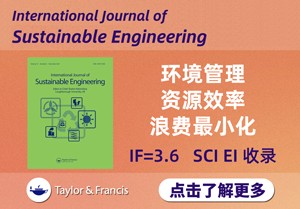

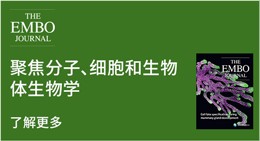
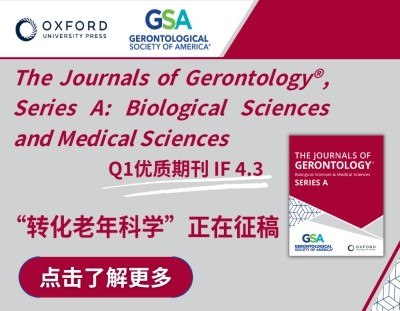









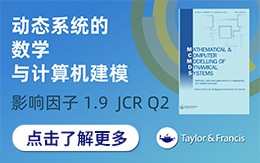



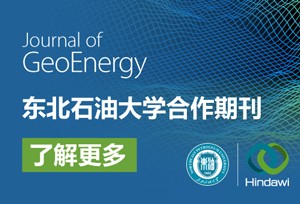
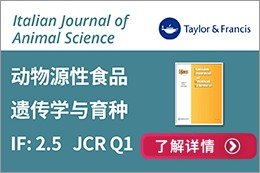














 京公网安备 11010802027423号
京公网安备 11010802027423号